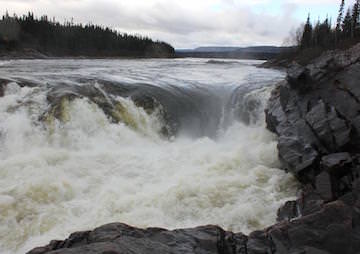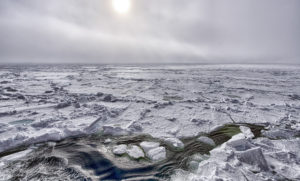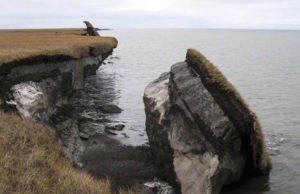Clean Energy Plans May Increase Toxins in Plankton
Environmental assessment of a proposed hydroelectric dam in Canada sheds new light on the cause of high levels of a potent neurotoxin in Arctic marine life.
By Alex Kirby, Climate News Network

Harnessing the power of Muskrat Falls to produce hydroelectricity could be damaging for indigenous communities. (innovationtrail via Flickr)
This Creative Commons-licensed piece first appeared at Climate News Network.
LONDON — Scientists in the US think they may now have the explanation to a conundrum that has puzzled them for a long time — why there are high levels of methylmercury, which can damage the nervous system, in Arctic marine life.
The answer, they report, appears to be one of those examples of worsening a problem by trying to solve it: human attempts to mitigate climate change have inadvertently altered the eating habits of Arctic plankton.
Researchers from the Harvard John A.Paulson School of Engineering and Applied Science and Harvard T.H. Chan School of Public Health suggest in the Proceedings of the National Academy of Sciences that the high levels of methylmercury, a potent neurotoxin, are a byproduct of global warming and the melting of sea ice in Arctic and sub-Arctic regions.
To tackle global warming, many governments are turning to hydro-electric power to replace fossil fuels.
Impact review
This latest research was part of a review of the environmental impact assessment for the Muskrat Falls hydroelectric dam in Labrador, Canada, which in 2017 will flood a large region upstream from an estuarine fjord called Lake Melville. The communities along the shores of Lake Melville are predominantly indigenous and rely on the lake for much of their food.
The researchers spent 10 days criss-crossing the lake to measure baseline methylmercury levels. They found that concentrations in the plankton peaked between one and 10 metres below the surface, closely matching findings from the central Arctic Ocean.
When fresh and salt water meet — in estuaries, or when sea ice melts in the ocean — salinity increases as water deepens, allowing organic matter — which typically sinks to the bottom — to reach a neutral buoyancy so that it cannot float either up or down in the water.
“Scientists have a responsibility to understand and explain how environmental systems
will react before they are modified”
This layer collects other small pieces of debris and concentrates them into a feeding zone for marine plankton. The bacteria stuck in this zone then complete a complex chemical process that turns naturally-occurring mercury into dangerous and readily-accumulated methylmercury.
Plankton in the Arctic and sub-Arctic are not choosy eaters: once in the debris layer, they go on a feeding frenzy that can last several weeks. The methylmercury they produce accumulates in other organisms and magnifies as it works its way up the food chain.
Amina Schartup, a biogeochemist at Harvard and lead author of the paper, says: “This system is incredibly efficient at accumulating methylmercury.” She adds that the same system is mirrored in the Arctic, where fresh water from melting ice mixes with salt water.
To find out what happens when methylmercury levels increase because of reservoir flooding upstream, the researchers collected soil cores from the inland areas due to be flooded in 2017 for the hydro-electric plant.
Simulated flooding
The team simulated flooding by covering the cores with river water. And, within five days, mercury levels in the water covering the cores increased 14-fold.
One of the communities along the shores of Lake Melville — and two-thirds of the lake itself — is part of Nunatsiavut, the first autonomous region in Canada governed by Inuit.
“Any kind of contamination is going to disrupt how we live as Inuit and impact our health and lifestyle,” says Sarah Leo, president of the Nunatsiavut government.
“We need more research to understand the downstream effects, and we need to develop strategies to mitigate those effects. How are we, as a community, going to adjust our lifestyle if we can no longer live off the land? These are all questions we need answered before flooding.”
Schartup says: “Scientists have a responsibility to understand and explain how environmental systems will react before they are modified, because once the damage is done, you can’t take it back.”
Your support matters…Independent journalism is under threat and overshadowed by heavily funded mainstream media.
You can help level the playing field. Become a member.
Your tax-deductible contribution keeps us digging beneath the headlines to give you thought-provoking, investigative reporting and analysis that unearths what's really happening- without compromise.
Give today to support our courageous, independent journalists.








You need to be a supporter to comment.
There are currently no responses to this article.
Be the first to respond.